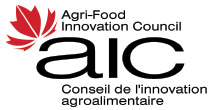Gender Equality Mainstreaming Digest – February 2019 Issue
Here are the highlights of this month’s Gender Equality Mainstreaming Digest! Click HERE for the full version.

Rime frost on spruce trees. Photo courtesy of D. Ceplis.
Highlights:
Opportunities and Upcoming Events:
PIPSC Research Officer – Women and Science – The Professional Institute of the Public Service of Canada, a national union representing some 61,000 professionals and scientists throughout Canada, requires a Research Officer for a one-year term at its National Office in Ottawa.
The Research Officer’s work will focus on the areas of women and science and science policy. The Research Officer will: be part of a team of communications, mobilization and research staff; coordinate PIPSCs work on women and science; contribute to research related to government science policy and will work with members to advance projects and objectives related to women and science and government science policy more broadly. The job will be open until filled.
Top 30 Under 30 for 2019 – The Alberta Council for Global Cooperation’s Top 30 Under 30 magazine highlights extraordinary young people who are working towards a just and sustainable future for everyone.
In honour of this year’s theme for International Development Week, Together for Gender Equality, the magazine will focus on the achievement of gender equality, one of the Sustainable Development Goals (SDGs) adopted by world leaders in the 2030 Agenda for Sustainable Development. We look forward to sharing with you how young adults have brought this SDG to life through transformative change that builds a necessary foundation for a peaceful, prosperous and sustainable world.
Join us on Thursday, February 7th. 6-6:45pm in the Atrium, Students’ Union Building, 8900 114st, NW, Edmonton, as we showcase this year’s recipients and highlight their contributions in working towards SDG 5: Gender Equality.
This Month’s News:
The Ag Women’s Network CHAMPIONS Project – Jen Christie, Director of Business Development 4-H and Chair Ag Women’s Network was recently interviewed. Her educational background includes Bachelor of Commerce Ag Business, University of Guelph, and MBA, Ivey Business School.
Some excerpts:
4. Why are you involved with gender issues in ag?
As said before, I felt compelled to find women in positions of leadership because I didn’t see them at John Deere or its dealerships. Once we started the AWN, I heard stories from women who had experienced blatant sexism, discrimination and harassment and I realized the industry was still not as inclusive as I had thought. The worst consequence is that people get hurt. Overall, the industry misses out on the innovation that is possible when there is more diversity of perspectives, including more women in leadership. I want everyone who wants to be a part of the exciting growth happening in Canadian agriculture to feel they are welcome here.
5. Please comment on what’s been going on with women in ag up to now? What’s going on now? What do you see happening in the future?
It is encouraging that there are conversations going on and there is support from the federal government. There is much to be done though. Conversations among women are helpful to understand what issues are affecting people but often the leaders who can help make change are not in the room, so we aren’t yet seeing changes where they are needed, e.g., workplace harassment. We have learned that in general, the experience of women farmers is different than that of working in the industry, so we feel we need to open of up the conversation to include more industry. That way we can begin to acknowledge and address the issues which might be preventing ag from attracting great talent from outside the “ag circle”.
9. What do you think is necessary to engage industry in gender conversations and make progress for the women’s file in Canada?
There are many great examples of organizations that have a great culture where everyone thrives, so this is not impossible. Frankly speaking, I don’t think we will see much progress until industry leadership decides this is an opportunity.
You don’t know what you don’t know, and I didn’t think that gender discrimination existed in agriculture because I hadn’t experienced it or recognized it when I did. When I started hearing stories from other women, I was shocked. I think many of our industry leaders would also be surprised to hear what some women have dealt with working in agriculture.
I hope everyone would agree we should not tolerate harassment or discrimination but preventing it from happening is where the hard work starts. It is uncomfortable to confront because no one wants to hear they haven’t done the best they could do, and the impact of these experiences is extremely personal. There isn’t one easy solution, but it starts with making it a priority, and I commend the leaders and organizations that have done this. I think we will see more because the reality is every industry from mining to tech to food service is looking at this. Can the agriculture industry afford not too?
Changing the Gender Bias in Agriculture – Women entrepreneurs are playing an important role in transforming global food security for economic growth, but they have to work twice as hard as men to succeed in agribusiness.
“Agriculture and agribusiness are generally perceived as run by men,” entrepreneur and Director of the Nairobi-based African Women in Agribusiness Network (AWAN) Beatrice Gakuba, told IPS. She noted that women entrepreneurs have to prove themselves, even though they are as capable and innovative as men.
“Women entrepreneurs face more challenges in getting their foot in the door in agricultural business than men when it comes to access to finance because of several factors, including socio-cultural beliefs,” adds Gakuba, who runs a flower export business.
“The relationship between money and human beings has always been handled by men, so when a woman says, ‘I want to grow my business, or I want to get a loan’, there are many questions asked. Women define agribusiness because more are employed in agriculture.”
Inclusion and equal participation in agricultural production has long been an issue for women farmers and entrepreneurs.
Canadian universities must stop undervaluing female academics – While women have achieved gender parity in Canadian universities’ student body, cohorts of PhD graduates and among tenure-track assistant professors, academia is not the most progressive Canadian workplaces for its professors.
There continues to be an imbalance of female academics studying and progressing within science, technology, engineering and math (STEM) disciplines.
Last year, the Canadian Association of University Teachers (CAUT) identified a median wage gap of approximately $13,750 between women and men working in Canadian universities. Using Statistics Canada’s data, my research team found significant gaps between men and women’s earnings in academia as well, but more troubling than the CAUT findings is that as female professors move up the ladder into senior administration, our data shows that the pay gap gets wider for them.
These pay gaps are widest among the top research-based universities, also known as the U15, that we celebrate as national champions for our research successes. While some may think the shortage of women in STEM is part of the problem, our findings show that the gender pay gap in universities is not better or worse in these competitive and male-dominated technical fields. So, for example, while we know that engineering generally had higher gender pay gaps than social science, economics showed a much larger gap than engineering.
Reports Publications and Resources:
Report: “Renewable energy: A Gender Perspective” – Check out the newly released report of the International Renewable Energy Agency (IRENA) on Gender and Renewable Energy. The most important findings are the underrepresentation of women in the renewable energy sector as well as the unequal access to energy based on gender inequalities.
The report shares the results of a survey on participants from more than 140 countries working in the renewable energy sector. It shows that, even though women are more employed in the renewable energy business than in conventional energy providing enterprises, there are still significant barriers for them to enter this sector and to access jobs in the science, technology, engineering and math (STEM) area. Furthermore, it is revealed that the access to energy is disproportionally lower for women and children and impacts them on a bigger scale. The implementation of a gender perspective into renewable energy policies would increase the achievement of the SDGs. IRENA recommends to mainstream gender in the renewable energy sector and include women’s knowledge, capacity and experiences as well as tailor training and skills development programmes in order to reach more gender equality in the renewable energy business.
Report: Toward Bridging Gender Equality and Innovation – This paper in the IDIA Insights series focuses on the various approaches, lessons learned, and practices gleaned from gender and innovation specialists to more holistically address gender equality and innovation. It addresses an area where limited resources currently exist, namely the nexus of gender equality and innovation. It builds on the premise that gender equality and innovation are both critical drivers to achieving the United Nations Sustainable Development Goals (SDGs).
It is organised as follows:
• Part 1 outlines Principles for applying a gendered lens to innovation, building upon the IDIA Innovation Principles.
• Part 2 describes what it means to integrate gender equality and innovation, drawing from IDIA members’ experiences and approaches. It identifies gender-related barriers, or those related to design or innovation management processes that may limit the utilisation or scaling of innovations.
• Part 3 presents a framework or “tool” with questions to trigger thought and action to support scaling innovations that advance gender equality. It outlines “what success may look like” at each stage of the scaling process, with a selection of resources included in the Appendix for further guidance.”
